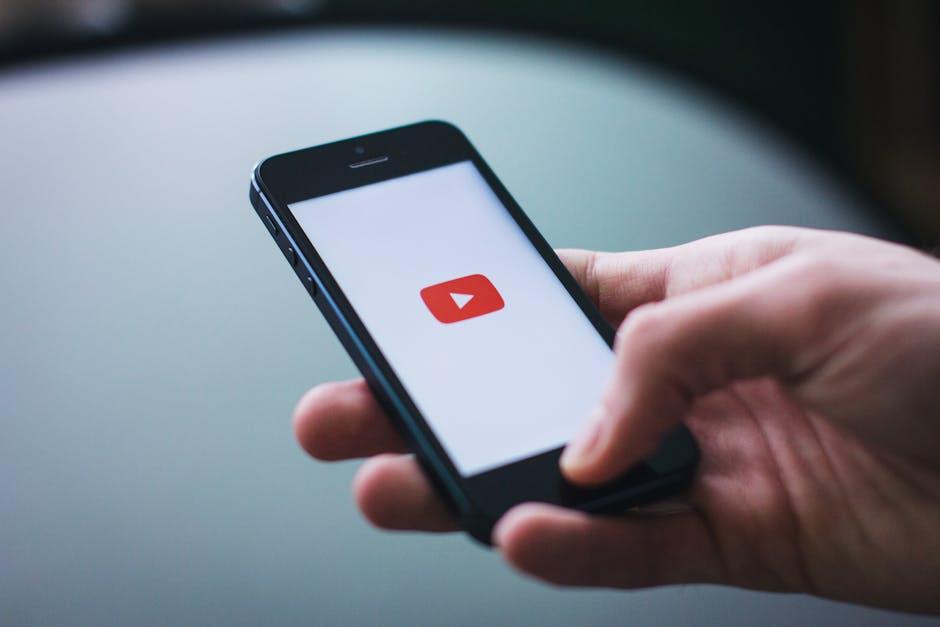Hey there, YouTube enthusiasts! Have you ever found yourself scrolling through your favorite channels and wondering just how much data you’re gobbling up with each click and view? It’s no secret that those tantalizing video thumbnails have a way of pulling you in, but have you ever stopped to think about the price of that binge-worthy content? In our digital age, where every swipe and tap counts towards our monthly data limits, it’s time to lift the curtain and uncover the true appetite of our beloved platform. In this article, we’ll dive into the nitty-gritty of YouTube data usage—breaking down the numbers, debunking myths, and sharing some nifty tips to help you manage your consumption without skimping on all the good stuff. So, grab your snacks, get comfy, and let’s unlock the mysteries behind those mesmerizing videos!
Understanding the Data Behind Your Streaming Habits
When you settle down to binge your favorite videos or catch up on the latest vlogs, have you ever wondered just how much data you’re munching through? Streaming platforms like YouTube can be surprisingly data-hungry, and it can be a little mind-blowing when you start breaking down those numbers. For instance, did you know that watching a video in standard definition (480p) gobbles up about 700MB of data per hour? If you’re relishing that high-definition experience (1080p), you could see that number spike to around 3GB an hour! And, let’s not forget 4K streaming, which can reach up to 7GB in the same time frame. Yikes, right?
Understanding your streaming habits can be a real game-changer when it comes to managing your data plan. Just take a moment to reflect on how often you’re streaming versus downloading. While downloads consume data just once, streaming calls for continuous data transfer. Here’s a quick snapshot of how various video resolutions stack up:
| Video Quality | Data Usage (per hour) |
|---|---|
| Standard Definition (480p) | 700MB |
| High Definition (1080p) | 3GB |
| 4K Ultra HD (2160p) | 7GB |
For those who frequently stream, it’s smart to keep an eye on your data consumption. Tracking your usage not only helps in avoiding those nasty overage fees but also lets you tailor your streaming experience. Next time you’re about to dive into another video saga, consider adjusting your quality settings if you want to savor your data a bit longer!

The Hidden Costs of High-Quality Video: How Resolutions Impact Your Data Use
When you’re curled up on the couch, ready to binge that new series, do you ever stop and think about the unseen costs as you crank up the resolution? Sure, those stunning 4K visuals are like candy to your eyes, but they’re not so sweet for your data plan. Streaming ultra-high-definition video can chew through your data like a hungry hippo at a buffet. Just consider what your video resolution does to those precious gigabytes. For example:
- Standard Definition (SD): Roughly 1 GB per hour
- High Definition (HD): About 3 GB per hour
- 4K Ultra HD: A staggering 7 GB or more per hour!
Now, that’s some serious data gobbling! If you’re on a limited plan, consistently opting for higher resolutions can lead to some unexpected overage fees. The impact isn’t just financial, though. It can also limit how much content you can actually enjoy without worrying about hitting that cap. So, let’s not let those beautiful pixels ruin your viewing experience. Instead, consider adjusting your settings based on your data usage habits. It’s a balancing act between enjoying stunning visuals and keeping your data plan intact. After all, who wants to miss the next big drama just because they overshot their data cap?

Tips and Tricks for YouTube Data Management that Save You Might
Managing YouTube data can feel like navigating a maze sometimes. One of the best ways to ensure you’re not drowning in data is to be strategic about your viewing habits. Try lowering your streaming quality when you’re on the go or using limited data; a simple switch from HD to standard definition can save you big time. Consider downloading videos for offline viewing instead of streaming them multiple times. This is especially useful if you have a few favorites you love revisiting. By planning your viewing ahead, you’ll keep that data usage in check without sacrificing your enjoyment.
Don’t forget about your upload habits either. Be mindful of file sizes when creating and uploading content—even small changes in resolution can lead to significant data savings over time. Keeping your file sizes minimal isn’t just about saving data; it also means faster uploads and less waiting around. Plus, using tools to compress videos before you upload can help streamline your process. Create a content calendar to avoid last-minute uploads that can lead to rushed decisions and larger files. With a little pre-planning, managing your YouTube data can feel less daunting and way more efficient!

Maximizing Your Viewing Experience Without Breaking the Data Bank
When it comes to streaming your favorite YouTube videos, it’s all about finding that sweet spot between quality and data usage. Think of it like cooking; you want the perfect mix of ingredients without overstuffing the pot. To keep your data usage in check, consider adjusting the quality settings of your video streams. For instance:
- Auto Quality: Let YouTube handle the quality based on your internet speed.
- 360p or 480p: Perfect for casual watching and can save a bunch of data.
- 720p: Ideal if you’re looking to balance quality with moderate data consumption.
Additionally, you might want to explore offline viewing options. Downloads can be a lifesaver; it’s like preparing meals in advance, so you’re not scrambling when hunger strikes—or in this case, when you want to binge a series without draining your data plan. Just imagine this little cheat sheet:
| Video Quality | Data Usage (per hour) |
|---|---|
| 360p | 0.3 GB |
| 480p | 0.5 GB |
| 720p | 1.5 GB |
| 1080p | 3 GB |
By being mindful of these factors, you can enjoy your favorite content while keeping your data usage in check. Who says you can’t have your cake and eat it too?
In Summary
And there you have it—our deep dive into the mysterious waters of YouTube data usage! Just like a cozy couch session where we get lost in endless videos, understanding how much data you’re really burning through can be a game-changer. Whether you’re binge-watching your favorite series or diving into how-to videos, keeping an eye on that data can save you some serious strain on your wallet (and your sanity).
So, the next time you hit play, maybe take a moment to think about those megabytes swirling around in the background. Are you streaming in high def, or can you dial it down a notch for those amazing cat videos? It’s all about balance. Remember, whether you’re a casual viewer or a devoted fan, being savvy about your data use means more uninterrupted viewing and less stress over bills.
Thanks for hanging out with me on this journey through the digital landscape of YouTube. I hope you gained some insights and a few laughs along the way. Now, go forth and conquer that YouTube adventure with all the knowledge you’ve armed yourself with! Happy streaming! 🎥🌟

